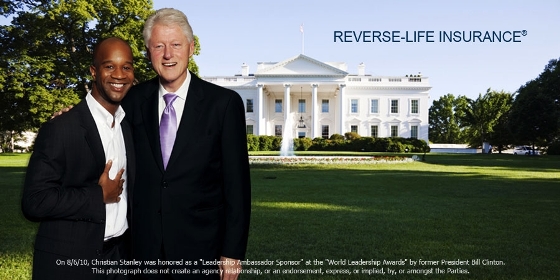Daniel C.S. Powell allegedly blew $5,000 of investor funds on cowboy boots. But that’s not the only reason he’s being financially regulated this week. Also problematic, from a technical regulatory standpoint, was that he “spent the past seven years creating the illusion that [he ran] a legitimate company involved in the life settlement industry,” says the SEC. He then used this illusion to raise $4.5 million from investors, but never “purchased or generated any revenue as a result of brokering the sale of a single life settlement.”
Instead, Powell upgraded his footwear and spent $5,000 to register for a dating service. He then blew $212,000 on cars, $240,000 in cash and checks, and $290,000 in personal debit card transactions before turning, as many wealthy people do, to philanthropy: he made a $55,000 donation to a tribute of Michael Jackson and a $35,000 donation to rapper Usher’s New Look Foundation. Of the $4.5 million raised, only $29,396.55 remains in his bank accounts.
So how did he raise $4.5 million in the first place? The SEC explains that Powell:
“raised funds from at least 50 investors nationwide in the fraudulent debenture offering, promising investors fixed interest returns ranging from 5 to 15.5 percent annually for five-year terms. Powell claimed the notes were backed by assets such as a gold mine in Nevada and a coal mine in Kentucky that he said held coal deposits valued at $11.8 billion.”
![]() Powell’s claims, it turns out, were not true! Not even the part about the Nevada gold mine. Or so says the SEC, who recently obtained an asset freeze against Powell and his companies, and appointed a temporary receiver over his companies.
Powell’s claims, it turns out, were not true! Not even the part about the Nevada gold mine. Or so says the SEC, who recently obtained an asset freeze against Powell and his companies, and appointed a temporary receiver over his companies.
Despite this, Powell’s website is still up and running. On the site, there is a “Message from the Chairman,” in which Powell explains the deep human need, long unmet, for his “Reverse-Life Insurance” product. Directly above the Chairman’s Message is this photograph of Powell (he’s on the left, the shorter of the two, no tie).
Hold on a second, is that William Jefferson Clinton? This Reverse-Life Insurance must be a fine product indeed, given President Clinton’s eager endorsement. No, wait a second. Sorry, I carelessly jumped to an unwarranted conclusion. It says at the bottom, in small font (arial blur?): “this photograph does not create an agency relationship, or an endorsement, express, or implied, by, or among the Parties.” Well, that takes care of that.
So what is this “Reverse-Life Insurance” business that Powell is pretending to have?
It’s what’s known as a “life settlement” business, and even the legitimate forms of this business are receiving regulatory scrutiny. In a nutshell, these businesses have found a way for people to get big cash from their life insurance without having first to bother dying.
These companies buy the right to collect your death benefit by paying you a sum of cash now, equal to some fraction of the death benefit. The fraction is based on a health assessment and mortality tables. The sooner you’re expected to die, the larger the sum the company will pay you. After the company makes the cash payment, the policy holder changes the beneficiary to the life settlement company, and the company pays the premiums going forward. The original beneficiary of the insurance is, well, no longer benefited (sorry Junior).
Not everyone is sure this is a good idea, and the industry is rife with fraud. In response, the SEC created a task force, which released a report urging that life settlements be included in the definition of “security,” so that the full apparatus of the securities laws and the SEC will be available to regulate the industry. Such a change could have a dramatic impact on this growing industry, with some predicting it will hobble or even destroy it.
For Powell, however, the fact that life settlements are not defined as “securities” provides meager comfort. The SEC undoubtedly has authority to sanction players who sell debentures, but blow the proceeds on cowboy boots.
Published by Jeremy L. Bartell
 Financially Regulated is published by Jeremy L. Bartell, a long-time admirer of Wall Street and its interesting cast of regulators. Jeremy is an attorney with Bartell Law in Washington D.C. He represents financial professionals nationwide in Finra inquiries and investigations, Finra arbitration, securities employment disputes and registration and disclosure matters.
Financially Regulated is published by Jeremy L. Bartell, a long-time admirer of Wall Street and its interesting cast of regulators. Jeremy is an attorney with Bartell Law in Washington D.C. He represents financial professionals nationwide in Finra inquiries and investigations, Finra arbitration, securities employment disputes and registration and disclosure matters.

























It’s absurd how fraudulent this fellow’s website is. The use of the President’s photo above Mr. Powell’s pitch for his product is inexcusable — while I don’t know, is there not some law against using the photo in a manner that implies endorsement? (And how could the disclaimer fix that — the disclaimer, as the author puts it, in “arial blur” font). Fun article, but ugly situation.
Looks like Powell pasted the White House into the background there. Unbelievable.